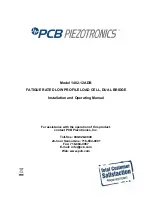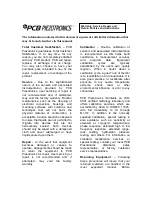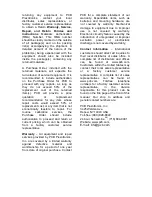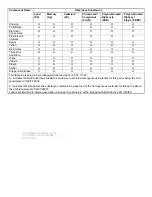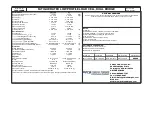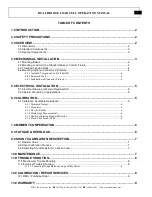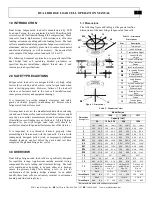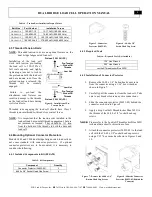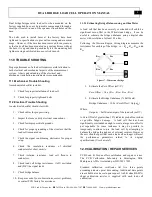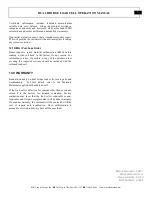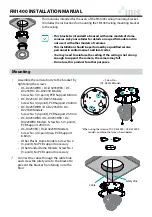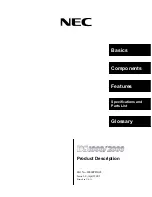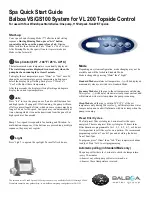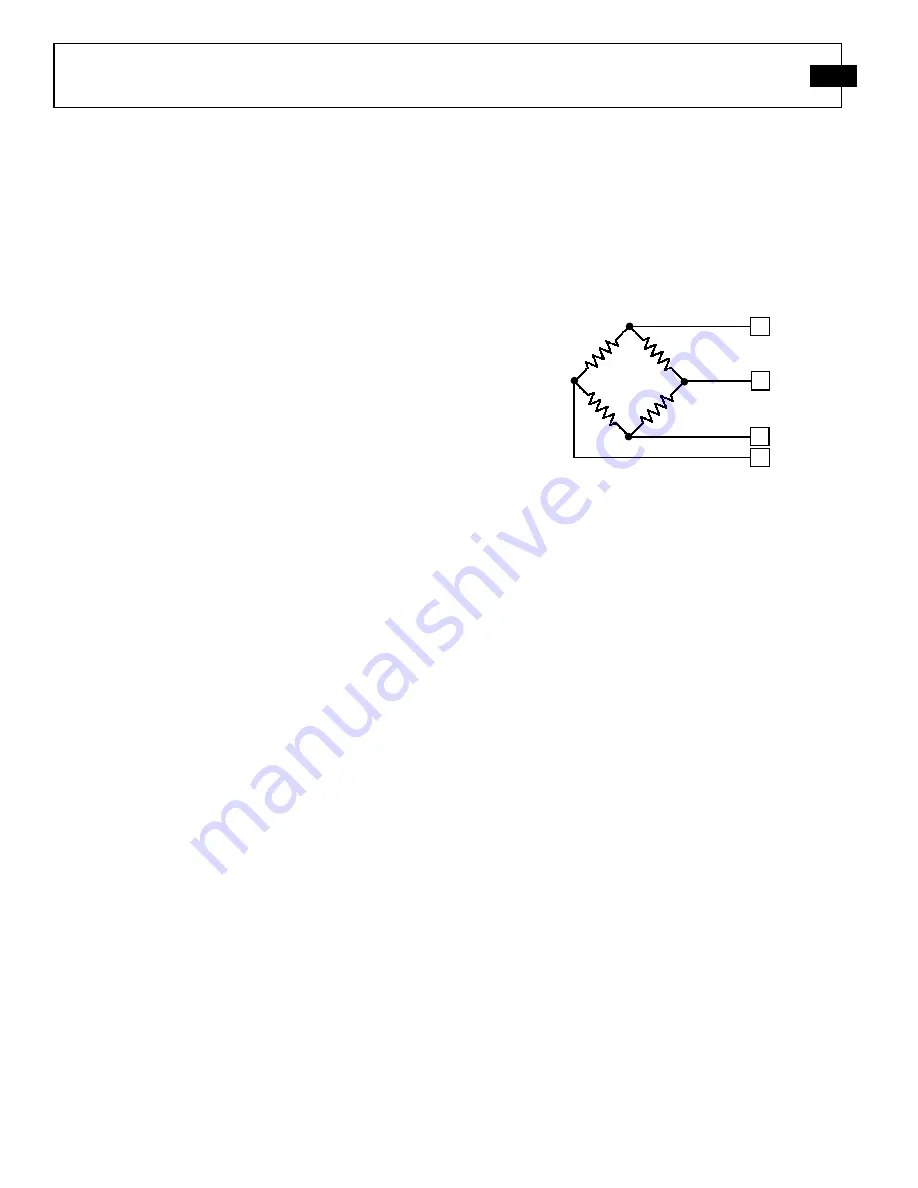
PCB Load & Torque, Inc.
Toll-Free in USA 866-684-7107
716-684-0001
www.pcbloadtorque.com
DUAL BRIDGE LOAD CELL OPERATION MANUAL
8
Dual bridge fatigue rated load cells, when mounted on the
factory supplied base, are barometric compensated through a
small port located in one of the spanner wrench holes on the
base.
The bolts used to install bases at the factory have been
tightened to specifications to prevent loosening under normal
usage. However, if the base has been removed for any reason,
or the load cell has been mounted on a custom fixture without
the base, it is a good idea to periodically test the mounting bolt
tightness using a calibrated torque or click wrench.
11.0 TROUBLE SHOOTING
Proper performance of a load cell requires careful attention to
both electrical and mechanical aspects of the measurement
system. A basic understanding of the electrical and
mechanical installation requirements is recommended.
11.1 Mechanical Trouble Shooting
A mechanical checklist includes:
1.
Check for proper installation of load cell.
2.
Check for properly tightened bolts.
11.2 Electrical Trouble Shooting
An electrical checklist should start with:
1.
Check cables for proper wiring.
2.
Inspect for loose or dirty electrical connections.
3.
Check for improper shield grounds.
4.
Check for proper grounding of the structure that the
load cell is mounted on.
5.
Check the signal conditioning electronics for proper
setup.
6.
Check
the
insulation
resistance
of
shielded
conductors for short circuits.
7.
Check isolation resistance, load cell flexure to
conductors.
8.
Check load cell bridge resistances, (A-D) excitation
and (B-C) the signal leads.
9.
Check bridge balance.
10.
Keep a record of your observations, correct problems,
or contact PCB factory for assistance.
11.2.1 Estimating Bridge Balance using an Ohm Meter
A load cell that has been severely overloaded will exhibit a
significant zero offset in the Wheatstone bridge. It can be
useful to estimate the bridge unbalance using a digital ohm
meter with resolution of at least 0.1 ohm.
Following the Western Region wiring diagram measure the
resistances for each leg of the bridge, i.e.: R
AB
, R
AC
, R
DB
, and
R
DC
.
1.
Estimate the Zero Offset (mV/V):
Zero Offset = 1.4 x (R
AC
- R
AB
+ R
DB
- R
CD
)
2.
Estimate the Bridge Unbalance (% Full Scale):
Bridge Unbalance = 100 x (Zero Offset / Output
FS
)
Where:
Output
FS
= Full Scale output of the load cell (mV/V)
A Zero Offset of greater than 10% indicates probable overload
or possible fatigue damage. A load cell that has been
significantly overloaded enough to create a large zero offset is
not repairable. In some instances it may be possible to
temporarily continue to use the load cell by attempting to
balance the bridge through use of external resistors. However,
the user should expect that such a load cell no longer will meet
the
performance
parameters
related
to
its
original
specifications. (User beware!!)
12.0 CALIBRATION / REPAIR SERVICES
PCB Load & Torque offers calibration and repair services.
The PCB Calibration Laboratory in Farmington Hills,
Michigan is A2LA Accredited per ISO/IEC 17025.
Standard calibration certificates list five force points
ascending and one point descending. Additional data points
are available at extra cost upon request. A 60 K ohm (
±
0.01%)
shunt calibration resistor is supplied with each load cell
calibration.
D
B
C
A
R
DB
R
CD
R
AB
R
AC
Figure 17
– Wheatstone Bridge

